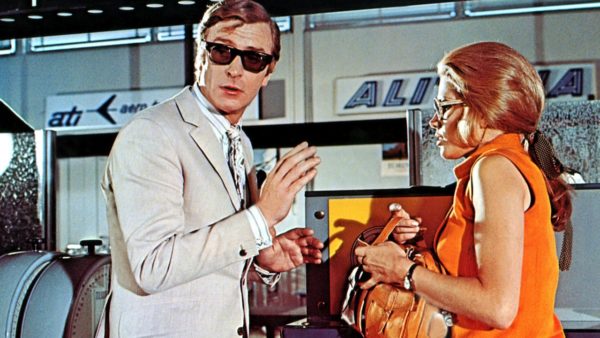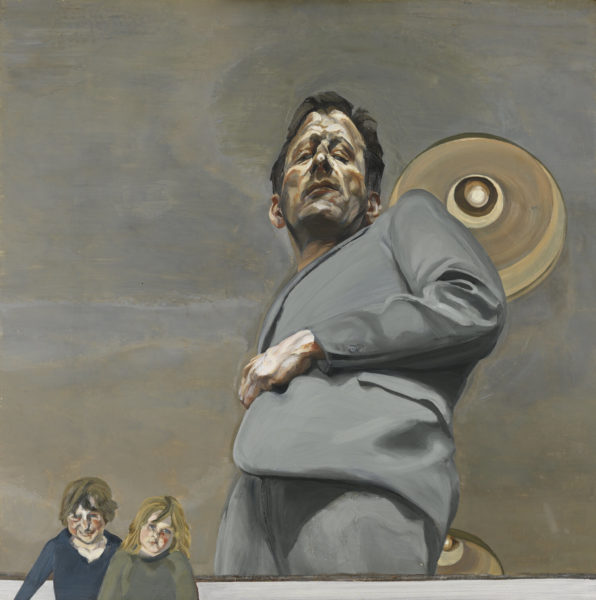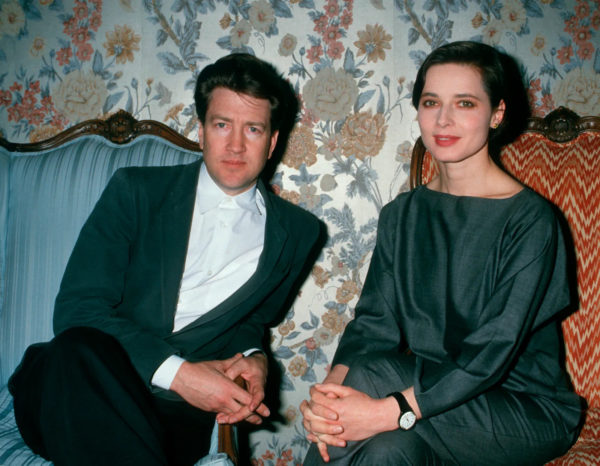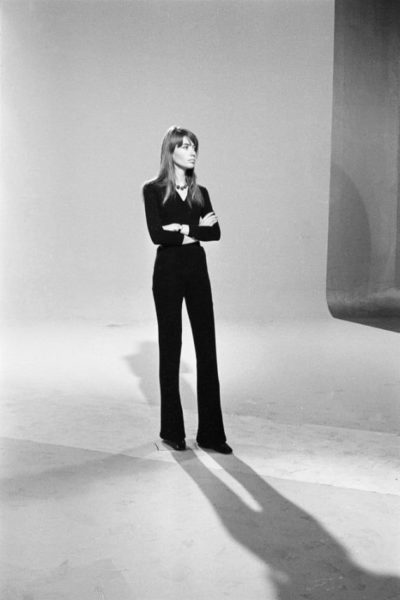The dinner jacket first appeared following the Crimean War. British soldiers, stationed in Turkey from 1853 to 1856, began to smoke local tobacco, taking it back to England with them on their return. The idea of smoking in groups after dinner then spread in England among the aristocratic class. Before entering the smoking room, men would put on short oriental-inspired jackets made of velvetcotton fabric with a complex weave, it is composed of a simp More, cashmere or woolcontinuous growth fiber of animal origin (alpaca, camel, Kas More. The thick jacket protected the smoker’s clothes from the smell of tobacco and the ashes. This is where the term smoking jacket originated.
From smoking rooms to social dinners under Edward VII
However, it was not until the end of the 19th century that the jacket entered social dinners, when Edward VII attended a dinner on his yacht wearing a midnight blue velvet jacket ordered from his tailor Henry Poole. The monarch asked his tailor to stiffen and structure the jacket so that it could be worn at dinner parties and compete with the traditional tail coat. The dinner jacket proved to be more comfortable than the suit. It became black when Edward mourned his father, Prince Albert. This is how it came to be known as a dinner jacket in United-Kingdom.
Tuxedo : clothing ritual from the United States
In the United States, it is called a tuxedo in memory of a famous ball in a club in Tuxedo Park in which a dandy by the name of Griswold Lorillard made an impression by wearing a jacket without tails. First rejected as being worn by eccentrics at social events, the modern dinner jacket gradually established and codified itself. It is now composed of intangible elements: its satin-covered lapels contrast with the rest of the jacket, which is made of a thick woolen fabric, a soft velvet or a light and shiny mohairfine and silky textile material from the hair of the angora More. The colours are sober, allowing the ladies’ outfits to take centre stage. Pockets are without flaps and straight jackets have only one buttonhole. In summer, the midnight blue or black dinner jacket is replaced by a cream cocktail jacket.
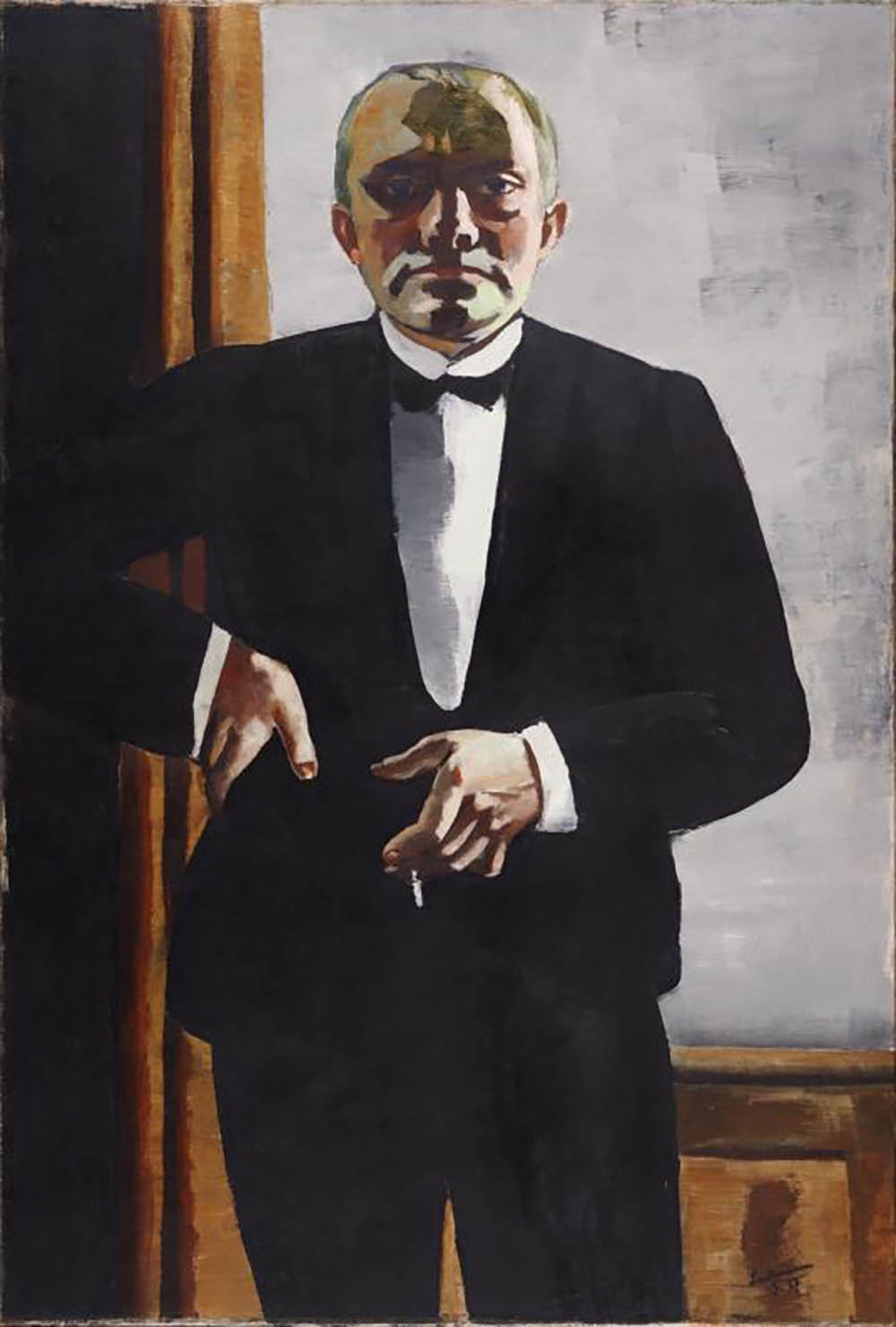
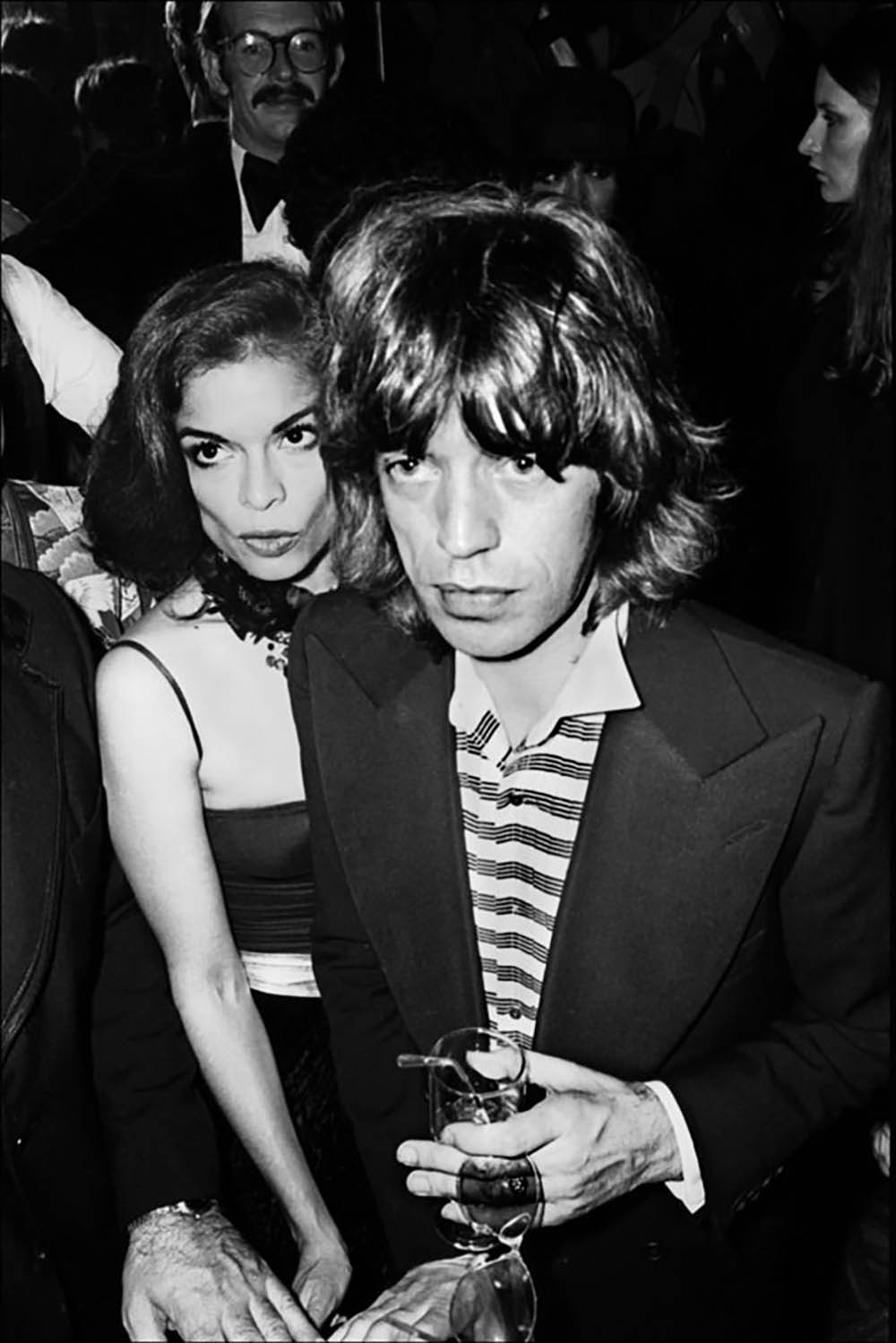
JAGGER, Bianca. JAGGER Mick. Studio 54, New York City, United States. 1977.
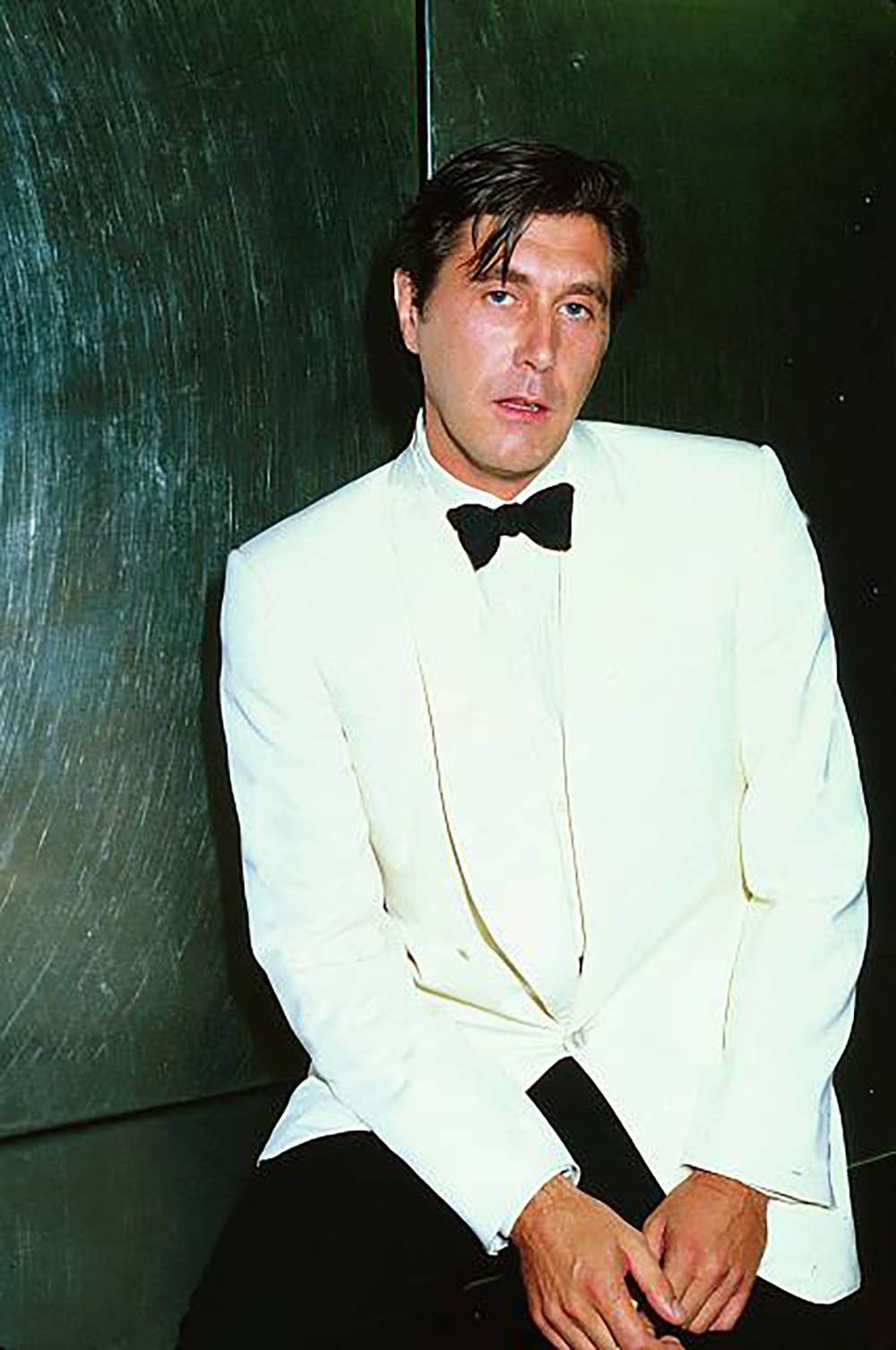
FERRY, Bryan. Los Angeles, United States. 1975.
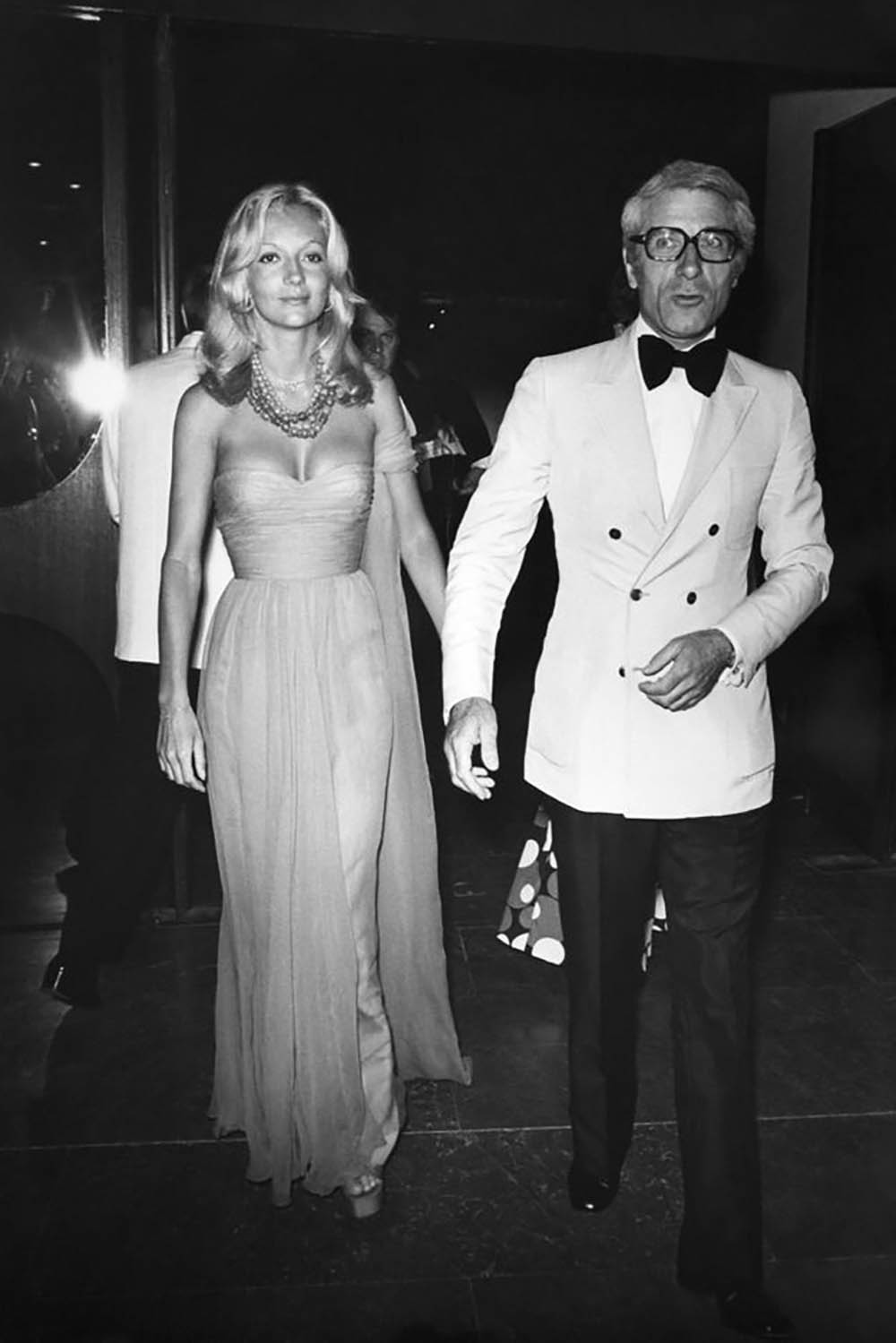
CELLIER, Caroline. POIRET, Jean. Monaco. August 1974.
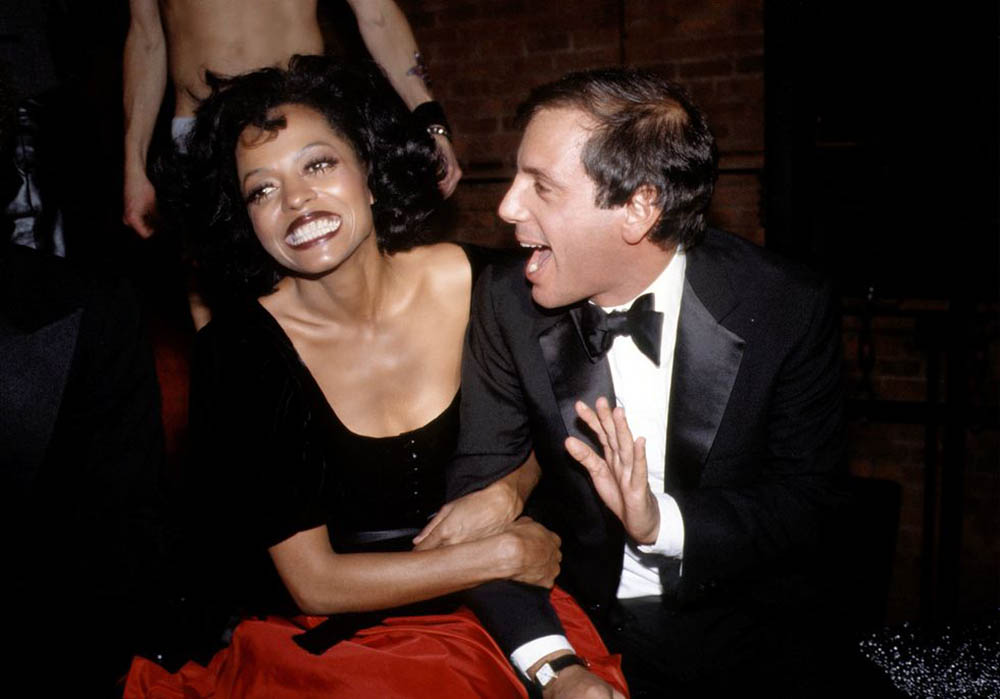
ROSS, Diana. RUBELL, Steve. Studio 54, New york City, United States. 1979.
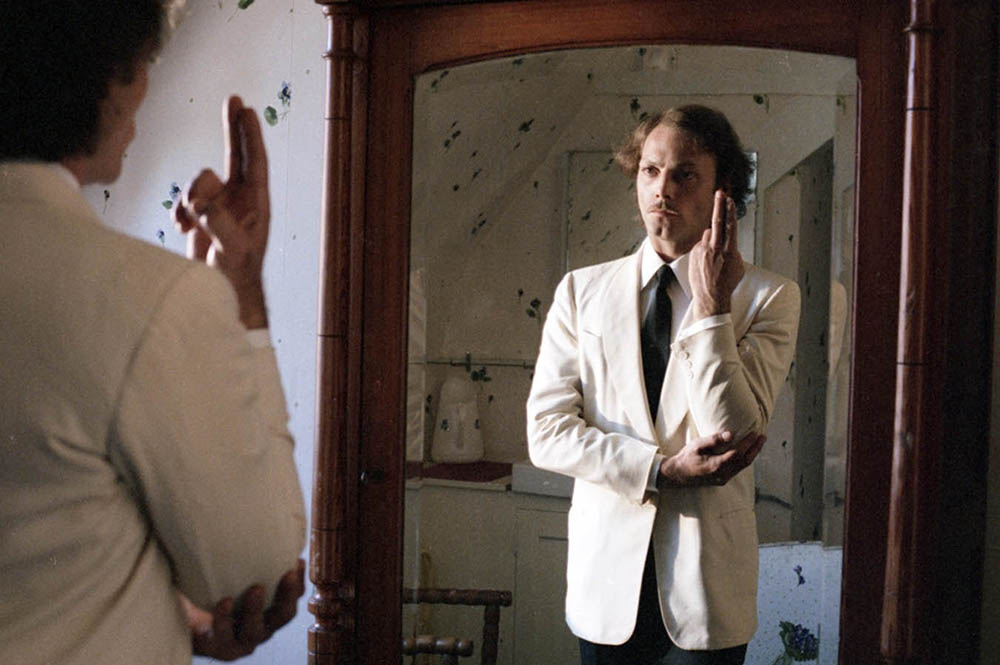
DEWAERE, Patrick, act. ANNAUD, Jean, Jacques, dir. Hothead. 1979. 90min.
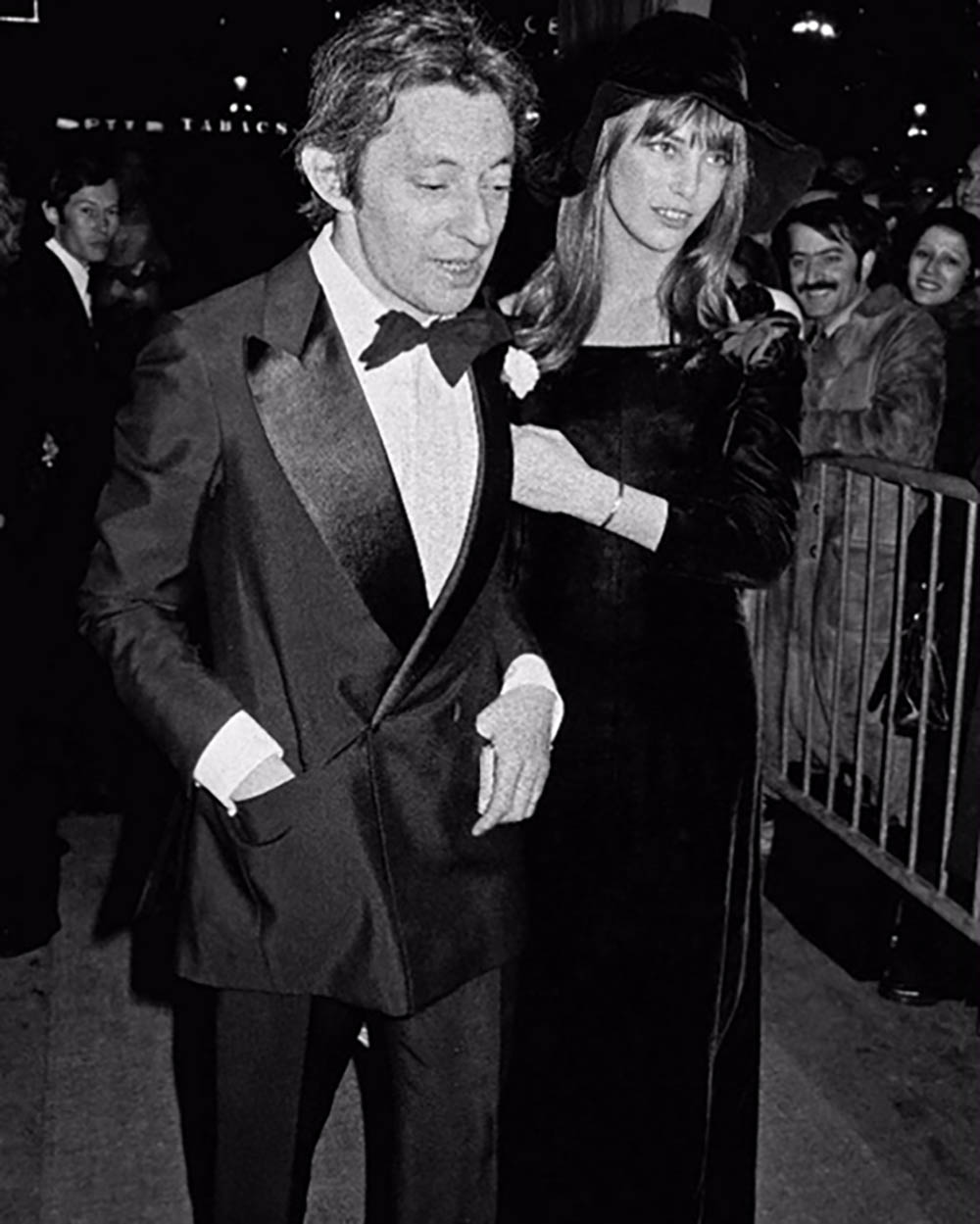
GAINSBOURG, Serge. BIRKIN, Jane. Paris, France. 1979.

CAINE, Shakira. CAINE, Michael. Nathan’s, New York City, United States. 1975.
- COTTON« Soft, but with weight. Relaxed, but never shapeless. It carries memory in its creases. »
- LUCIAN FREUD« from borrowed suits to bespoke tailoring, Freud’s fashion choices evolved with his art »
- DAVID LYNCH« The oddest of Americans, the most American of oddballs, Lynch was a man with a uniform. »
- THE FLARED TROUSER
